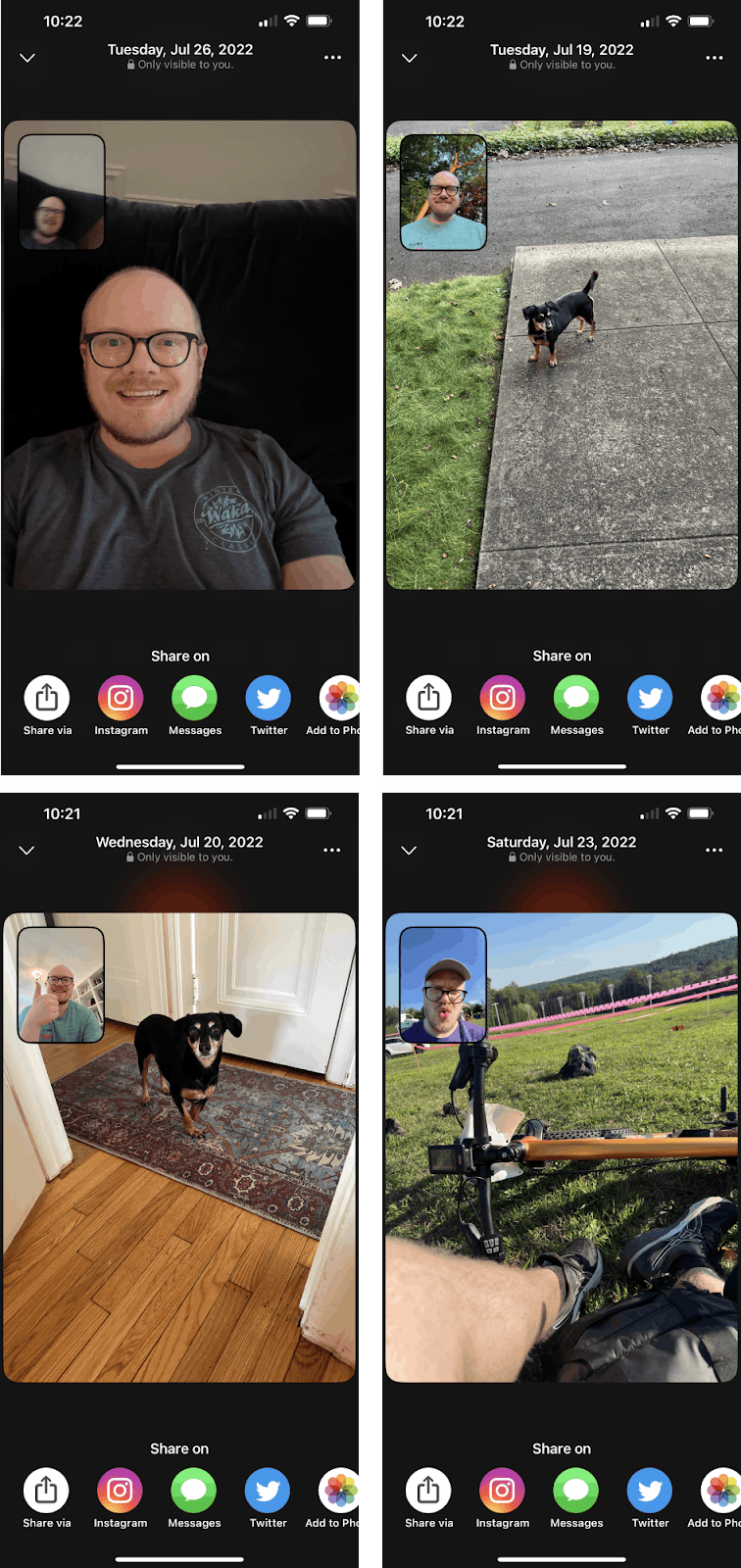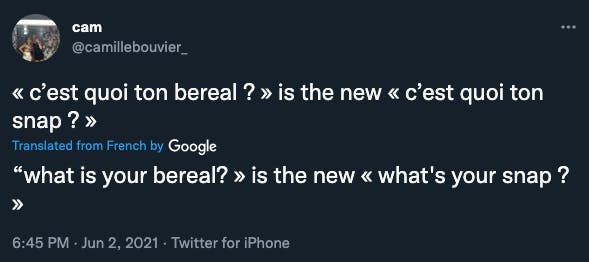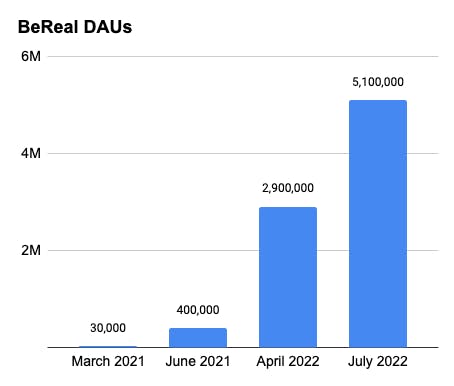
Jan-Erik Asplund
Co-Founder at Sacra
BeReal was founded by French ex-GoPro video producer Alexis Barreyat and launched in December 2019. The core conceit of the app is that users post an unedited, two-way photo using their front and rear camera of what they’re doing once a day in response to a push notification.

The push notification comes at a different time every day but arrives at the same time for all users, and after posting, a user can see what their friends posted as their BeReal for the day, comment, and react with a personalized “RealMoji” (a snapshot reaction as opposed to a thumbs-up, a like, etc.)

BeReal originally went viral in France. Its initial spread was among college students, for whom giving out their BeReal username became a new mode of making friends and flirting.
By March 2021, it was in the top 10 free apps in the French iOS store without spending anything on acquisition. By June, it had 400,000 daily active users.

In April 2022, the app broke through in the United States, climbing to 2.9M DAUs by the end of the month and passing 5M in July. For the last few weeks, it’s been the #1 free app in the app store, above TikTok.
Growth techniques included:
Downloads are now above 20 million worldwide, with the U.S. representing 35% of the market, then the UK with 17% and then France with 10%.
Predecessors to BeReal include Frontback and Minutiae, which hinged on a similar premise: users taking candid two-way photos in response to a randomly timed push notification.
Frontback launched in 2013, raised $4M and got 200K installs in a month but couldn’t fix their issues with user retention and announced a shut down 2 years later.
Today, BeReal is part of a larger wave of “anti-Instagram” apps built in response to the perceived inauthenticity and artificiality of Instagram’s platform.
Within this category are other homescreen widget apps like LiveIn and Locket, which focus on paring down users’ social circles and replacing the scrollable feed with a dynamic homescreen widget. Locket had a moment of popularity and hit 20 million installs worldwide, but its popularity has waned, and today it sits at #111 in the App Store.
Poparazzi garnered 500,000 preorders before launch for their app and hit 5M+ users in their first year before raising $15M from Benchmark. The premise of Poparazzi is that users take photos of their friends—not themselves. Today, it’s fallen out of the top 200 spots in the App Store and has a lower share of users and time spent than Locket, LiveIn or BeReal.
There are a few key differences in the dynamics between BeReal and Facebook/Instagram/Snapchat that are interesting to note:
Facebook and Instagram surpassed Dunbar’s number long ago by incentivizing network growth. As they grew, it diluted the quality of the user experience—it was no longer a place for you and your friends, it was a huge public square.
BeReal actively works to keep users’ circles small:
The upshot is that people are generally limiting the people that they allow to view their BeReals to their closest friends—not parents, teachers, acquaintances, etc.
On a platform like Instagram, the amount of editing/post-processing/planning/curation that goes into a single post can be immense. That’s in stark contrast to its original premise of quickly stylized photos using pre-set filters—and it tilts the content playing field in favor of influencers and those who can spend large amounts of time and money creating professional images and videos.
BeReal makes it impossible to curate more than a marginal amount. When the push notification arrives, you have to take a two-way picture—you can hold off and take it later that day, but your post will be implicitly shamed with a “x posted late” tag.
Social media app for sharing unfiltered daily photos using front and back cameras